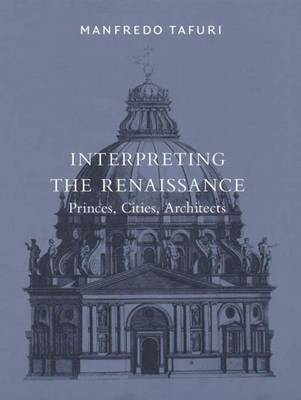Harvard University Graduate School of Design S.
1 total work
Manfredo Tafuri (1935 - 1994) is acknowledged as one of Italy's most influential architectural historians. In his final work, "Interpreting the Renaissance", published here in English for the first time (the Italian edition, "Ricerca del Rinascimento", appeared in 1992), Tafuri analyses Renaissance architecture from a variety of perspectives, exploring questions that occupied him for over thirty years. What theoretical terms were used to describe the humanist analogy between architecture and language? Is it possible to identify the political motivations behind the period's new urban strategies? And how does humanism embody both an attachment to tradition and an urge to experiment? Tafuri studies the theory and practice of Renaissance architecture, offering new and compelling readings of its various social, intellectual and cultural contexts, while providing a broad understanding of uses of representation that shaped the entire era.
He synthesises the history of architectural ideas and projects through discussions of the great centres of architectural innovation in Italy (Florence, Rome and Venice), key patrons from the middle of the fifteenth century (Pope Nicholas V) to the early sixteenth century (Pope Leo X), and crucial figures such as Leon Battista Alberti, Filippo Brunelleschi, Lorenzo de' Medici, Raphael, Baldassare Castiglione and Giulio Romano. A magnum opus by one of Europe's finest scholars, "Interpreting the Renaissance" is an essential book for anyone interested in the architecture and culture of fifteenth- and sixteenth-century Italy.
He synthesises the history of architectural ideas and projects through discussions of the great centres of architectural innovation in Italy (Florence, Rome and Venice), key patrons from the middle of the fifteenth century (Pope Nicholas V) to the early sixteenth century (Pope Leo X), and crucial figures such as Leon Battista Alberti, Filippo Brunelleschi, Lorenzo de' Medici, Raphael, Baldassare Castiglione and Giulio Romano. A magnum opus by one of Europe's finest scholars, "Interpreting the Renaissance" is an essential book for anyone interested in the architecture and culture of fifteenth- and sixteenth-century Italy.
